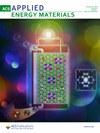Predictors, prevalence and outcome of hypertensive disorders in pregnancy in Nigerian tertiary health facilities
Abstract
Objective
Determine prevalence, risk factors and outcomes of hypertensive disorders in pregnancy (HDP).
Design
Cross-sectional analysis of data captured in the Maternal and Perinatal Database for Quality, Equity and Dignity (MPD-4-QED) between September 2019 and August 2020.
Setting
Fifty-four referral level facilities in Nigeria.
Population
Women whose pregnancy ended (irrespective of the location or duration of pregnancy) or who were admitted within 42 days of delivery.
Methods
Descriptive statistics and multilevel mixed-effects logistic regression models.
Main Outcome Measures
Prevalence of HDP, sociodemographic and clinical factors associated with HDP and perinatal outcomes.
Results
Among the 71 758 women 6.4% had HDP and gestational hypertension accounted for 49.8%. Preeclampsia and eclampsia were observed in 9.5% and 7.0% of all pregnancies, respectively. The predictors of HDP were age over 35 years (OR1.96, 95% CI 1.82–2.12; p < 0.001), lack of formal educational (OR 1.18, 95% CI 1.06–1.32; p = 0.002), primary level of education (OR 1.20, 95% CI 1.03–1.4; p < 0.002), nulliparity (OR 1.21, 95% CI 1.12–1.31; p < 0.001), grand-multiparity (OR 1.36, 95%CI 1.21–1.52; p < 0.001), previous caesarean section (OR 1.26, 95%CI 1.15–1.38; p < 0.001) and previous miscarriage (OR 1.22, 95% CI 1.13–1.31; p < 0.001). Overall 3.7% of the patients with HDP died, with eclampsia having the highest case fatality rate of 27.9%. Stillbirth occurred in 11.9% of pregnancies with hypertensive disorders.
Conclusions
Hypertensive disorders in pregnancy are not uncommon in Nigeria. They are associated with adverse outcomes with over one-quarter of women with eclampsia dying. The main predictors include older age, poor education, extremes of parity and previous CS or miscarriage. Maternal and perinatal outcomes are poor with about a quarter developing complications and about 1 in 10 having stillbirths.

 求助内容:
求助内容: 应助结果提醒方式:
应助结果提醒方式:


